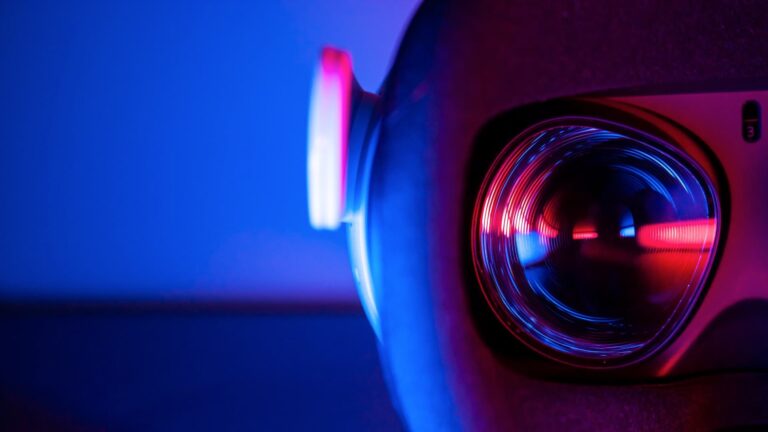
Like many analyst firms, market sizing is one of the ongoing practices of AR Insider’s research arm ARtillery Intelligence. A few times per year, it goes into isolation and buries itself deep in financial modeling. One such exercise recently examined the full spatial spectrum.
By that, we mean the main tentpoles of XR: mobile AR, headworn AR, and VR. These each get their own standalone forecasts, but are also assembled together once per year for a holistic view. We don’t do market sizing around the m-word because, well, it doesn’t exist yet.
So what did this forecast uncover? At a high level, global XR revenue is projected to grow from $15.7 billion in 2021 to $73.1 billion in 2026. This steep growth is driven by the collective revenue generation around several markets, and the projected outer-year inflections in headworn AR.
Drilling down, our latest Behind the Numbers installment looks at the forecast’s outlook for consumer software spending. How much do they spend on immersive games, apps, and experiences? These categories are broad as they span the full spatial spectrum defined above.
Meaningful Market
First, to define consumer XR software, it’s apps or experiences that consumers pay for, excluding hardware like VR headsets. It doesn’t include software that helps businesses develop consumer XR experiences (covered separately). It’s limited to direct consumer spending.
Consumer XR spending is also subdivided by digital and physical goods. Digital goods include games, apps, or in-app purchases (IAP). Physical goods spending tallies the transaction value of products whose sale is influenced in some way through AR & VR visualization.
Starting with XR digital goods, spending was estimated to be $1.7 billion in 2021, growing to $5.4 billion in 2026, a 25.2 percent compound annual growth rate. This category is dominated by VR apps and games (mostly the latter), as well as AR in-app purchases (IAP).
Taking those one at a time, VR gaming inherits traction and demand from the massive and established gaming industry. Though it’s a small subset of that broader universe, it still represents a meaningful and growing market, further amplified by Meta’s massive investments.
By contrast, consider AR, where consumers largely aren’t paying for experiences. As we’ve examined, AR is too early and unproven to get users to pay for it. This means most consumer AR experiences are brand-sponsored (think: Snapchat lenses) rather than user-purchased.
One exception/outlier is consumer IAP spending that occurs within Pokémon Go, which still generates revenue. It accounts for 97 percent of consumer AR digital goods spending. Here, Niantic has found a sweet spot in Pokemon Go’s game mechanics that drive in-app purchases.
Projecting forward, this category of consumer AR software spending could get a boost from Niantic’s Lightship platform that brings IAP-producing AR to other titles. But that’s dependent on developers running with that framework to capture some Pokémon Go-like magic.
Furniture to Footwear
Moving on to XR physical-goods spending, this category is projected to grow from $25.2 billion last year to $211 billion by 2026. Again, this includes consumer purchases that are informed or influenced through AR and VR product visualization – everything from furniture to footwear.
One caveat is that spending on XR-influenced physical goods isn’t counted as “XR revenue” per se. It’s rather spending on physical goods that’s influenced through XR, meaning it would inflate XR’s value to assign that revenue (e.g., a new couch) wholly to the technology.
Another question is why such steep growth? First, it’s growing from a small base (mathematically creates higher percentage jumps). It’s also following a rapid adoption path, driven by current momentum and quickly-escalating buying power among the camera-native Gen-Z.
But it’s worth noting that, though this is steep growth, it represents a tiny share of overall consumer spending. Specifically, the $211 billion projected for XR-influenced physical goods in outer years is only .38 percent of the $56 trillion in global consumer spending.
In terms of breakdowns and spending shares, the story is the inverse of the XR digital goods segment explored above. In other words, AR is the dominant force in consumer physical goods spending, while VR lags far behind. This has a lot to do with the scale that mobile AR achieves.
Because it piggybacks on 3 billion+ global smartphones, mobile AR (headworn AR notwistanding) has become an attractive marketing channel, as brands are all about scale. So dimensional AR try-ons and other forms of immersive shopping have gained meaningful traction.
As for the AR shopping formats that are driving all that spending, they include social lenses, visual search, and web AR. Social lenses lead the way due to Snap’s traction and investments, but visual search will gain ground over time due to a high-intent use case… just like web search.
We’ll pause there, cue the full report, and circle back in a future Behind the Numbers to unpack more market-sizing data…






